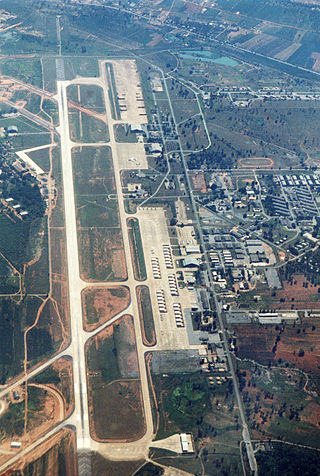
Korat Royal Thai Air Force Base is a base of the Royal Thai Air Force (RTAF) in northeast Thailand, approximately 200 km (125 mi) northeast of Bangkok and about 4 km (2.5 mi) south of the centre of the city of Nakhon Ratchasima in the Nakhon Ratchasima Province, the largest province in Thailand.

The 374th Airlift Wing is a unit of the United States Air Force assigned to Fifth Air Force. It is stationed at Yokota Air Base, Japan. It is part of Pacific Air Forces. The 374th Airlift Wing is the only airlift wing in PACAF and provides airlift support to all Department of Defense agencies in the Pacific theater of operation. It also provides transport for people and equipment throughout the Kantō Plain and the Tokyo metropolitan area.
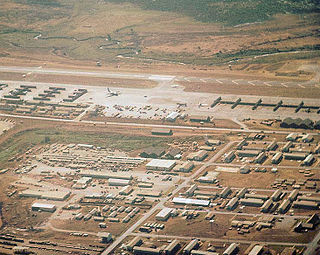
Pleiku Air Base is a former air force base in Vietnam. It was established by the Republic of Vietnam Air Force (RVNAF) in 1962 at an undeveloped airstrip, and was used by the United States Air Force during the Vietnam War in the II Corps Tactical Zone of South Vietnam. It was captured by the People's Army of Vietnam (PAVN) in March 1975 and was abandoned for many years. Today, the facility has just redeveloped as Pleiku Airport。

Phan Rang Air Base is a Vietnam People's Air Force (VPAF) (Khong Quan Nhan Dan Viet Nam) military airfield in Vietnam. It is located 5.2 miles north-northwest of Phan Rang – Tháp Chàm in Ninh Thuận Province.

Tan Son Nhut Air Base (1955–1975) was a Republic of Vietnam Air Force (RVNAF) facility. It was located near the city of Saigon in southern Vietnam. The United States used it as a major base during the Vietnam War (1959–1975), stationing Army, Air Force, Navy, and Marine units there. Following the Fall of Saigon, it was taken over as a Vietnam People's Air Force (VPAF) facility and remains in use today.
The United States Air Force (USAF) deployed combat aircraft to Thailand from 1960 to 1975 during the Vietnam War. Today, US military units train with other Asian militaries in Thailand. Royal Thai Air Force Bases are an important element in the Pentagon's "forward positioning" strategy.
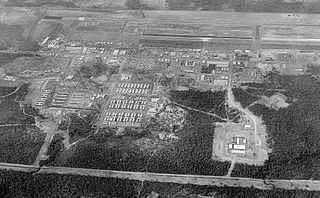
The Nakhon Phanom Royal Thai Navy Base (NKP), formerly Nakhon Phanom Royal Thai Air Force Base, is a Royal Thai Navy facility used for riverine patrols along the Mekong River. It is approximately 587 km (365 mi) northeast of Bangkok, 14.5 km (9.0 mi) west of Nakhon Phanom city in Nakhon Phanom Province in the northeastern region of Thailand, and 411 km (255 mi) from Hanoi in Vietnam. The Mekong River is NKP's border with Laos. The airfield at NKP is jointly used as a civilian airport.

Takhli Royal Thai Air Force Base is a Royal Thai Air Force (RTAF) facility in central Thailand, approximately 144 miles (240 km) northwest of Bangkok in Takhli District, Nakhon Sawan Province.
Ubon Royal Thai Air Force Base is a Royal Thai Air Force (RTAF) facility located near the city of Ubon Ratchathani, in Ubon Ratchathani Province. It is approximately 488 km northeast of Bangkok. The Laos border is about 60 kilometres (37 mi) directly east. The facility is also used as a civil airport.
U-Tapao Royal Thai Navy Airfield is a military airfield of the Royal Thai Navy (RTN) approximately 140 kilometres (87 mi) southeast of Bangkok in the Ban Chang District of Rayong Province near Sattahip on the Gulf of Thailand. It is serves as the home of the RTN First Air Wing.
Udorn Royal Thai Air Force Base is a Royal Thai Air Force (RTAF) base, the home of 23rd Wing Air Command. It is in the city of Udon Thani in northeastern Thailand and is the main airport serving the city and province.

The 405th Air Expeditionary Wing is a provisional United States Air Force unit assigned to Air Combat Command. It may be activated or inactivated at any time.

The 388th Fighter Wing (388FW) is a United States Air Force unit assigned to the Air Combat Command Fifteenth Air Force. The unit is stationed at Hill Air Force Base, Utah.

Ching Chuan Kang Air Base is a Republic of China Air Force (ROCAF) base located in Taichung, Taiwan. It is the home to the 3rd Tactical Fighter Wing, with three squadrons of AIDC F-CK-1 Ching-kuo fighter aircraft. It is also used by the army's airborne and special operations command.
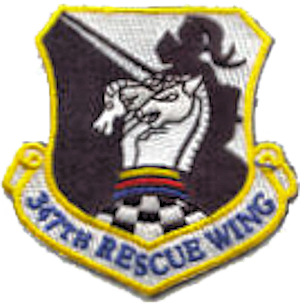
The 347th Rescue Wing is an inactive United States Air Force unit. It was last assigned to the Air Force Special Operations Command, stationed at Moody Air Force Base, Georgia. It was inactivated on 1 October 2006.
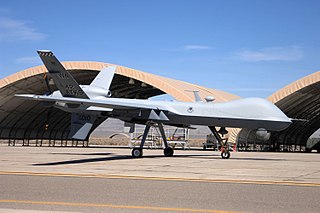
The 432nd Wing is a United States Air Force unit assigned to Air Combat Command at Creech Air Force Base near Indian Springs, Nevada. It flies General Atomics MQ-9 Reaper and RQ-170 Sentinel Unmanned aerial vehicles.

The 315th Operations Group is a United States Air Force Reserve unit assigned to the 315th Airlift Wing. The unit is stationed at Charleston Air Force Base, South Carolina. The 315th Group controls all operational McDonnell Douglas C-17 Globemaster III flying squadrons of the 315th Airlift Wing. It was activated in 1992, when Air Force Reserve Command implemented the Objective Wing organization.
The 600th Photo Squadron is an inactive United States Air Force (USAF) squadron. It was inactivated in 1976.
The year 1961 was the 180th year of the Rattanakosin Kingdom of Thailand. It was the 16th year in the reign of King Bhumibol Adulyadej, and is reckoned as year 2504 in the Buddhist Era.

The Kingdom of Thailand, under the administration of military dictator Field Marshal Thanom Kittikachorn, took an active role in the Vietnam War. Thailand was the third-largest provider of ground forces to South Vietnam, following the Americans and South Koreans.




















